2018’s Aquaman stars Jason Momoa, a goliath of an actor with roots as “Game of Thrones”’ Khal Drogo and starring roles in “Frontier” and “Conan the Barbarian”. Known for playing formidable renegades, He’s far from what public opinion would have expected as DC’s live-action Aquaman. To the average person, Aquaman is a useless, clean-cut superhero with the ability to talk to fish and very little tactical worth outside of his ocean home. Since his debut, Aquaman has struggled to form the iconic image heroes as Superman and Batman possess. After the massive success of Momoa’s Aquaman, the character feels miles away from the bland vision many previously attached to him. What turned one of DC’s most laughable characters into a gritty powerhouse? Taking a closer look at how Aquaman, his origin, and his powers have evolved since his first appearance in the 1940s paints a clear picture of how a hero sunk into comic relief and clawed his way to becoming the new face of DC’s cinematic success.
Golden Age Image- The Science Fiction Origin
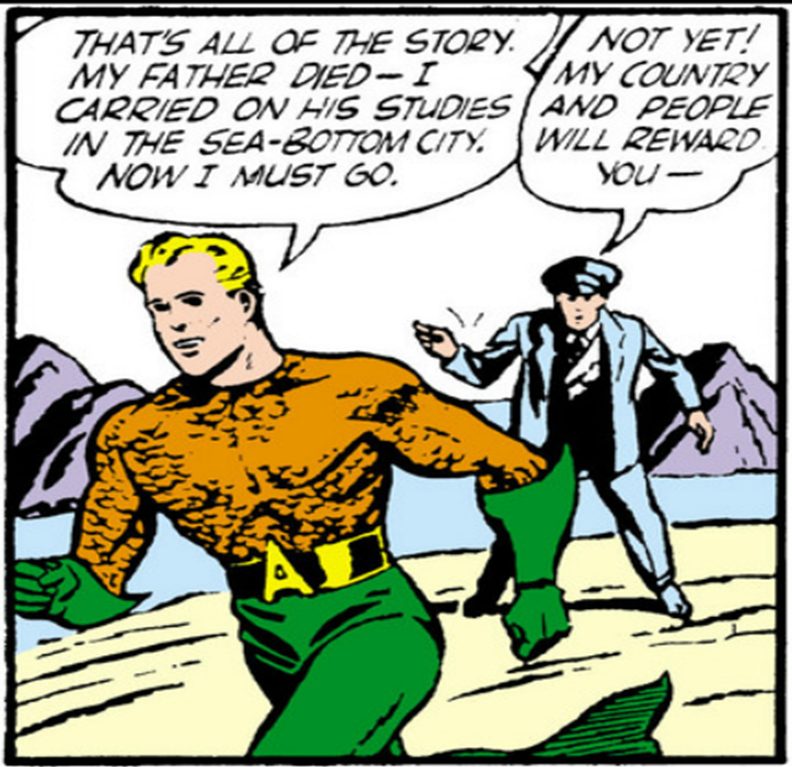
Aquaman first appeared in 1941. His early stories served as backup content in superhero anthologies before he was given a title of his own. While he was not necessarily a joke character, this Aquaman was not written with longevity in mind. He came dangerously close to disappearing into the annals of history with the dozens of Golden-Age heroes that couldn’t hack it after World War II.
His debut origin was born of old fashioned science fiction. Aquaman was the son of a deep-sea marine biologist. His father uses his extensive research to build the pair a home under the ocean, in the remains of the sunken city of Atlantis. There, Arthur’s father studies the sealife and teaches his son to communicate with fish in their own language. Scientific research is the driving force behind all of Aquaman’s powers. His father discovers a method of breathing beneath the sea using the oxygen in the water, a skill that Arthur learns to perfection. In this incarnation, Aquaman is an ordinary human bolstered by his father’s extreme intelligence and devotion to the sea.
Like most of the Golden Age heroes, Aquaman joins DC’s finest in the fight against the Nazi threat. He utilizes his oceanic powers to take on German U-boats and assist the Allied armies on coastal fronts. There was a lot to admire about the earliest Aquaman. These better qualities followed him into the Silver Age, where his story began to more closely resemble the Aquaman we know today.
Silver Age Image- The Superhuman Origin
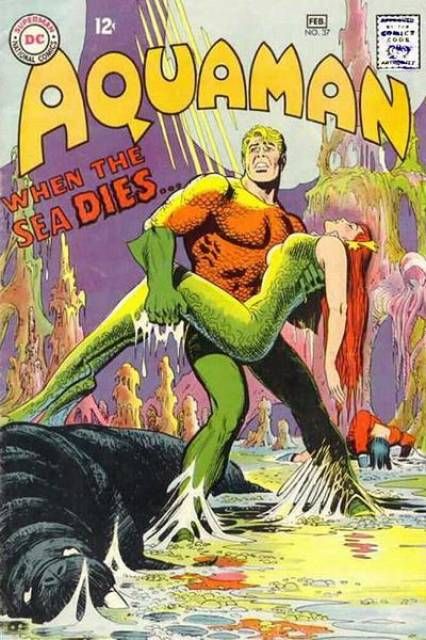
The Silver Age is the first time we visit Amnesty Bay, home to lighthouse keeper Tom Curry. Tom meets and falls in love with Atlanna, a mysterious woman who seems bound to the ocean and unwilling to disclose her past to her new lover. Her secrecy is broken after she gives birth to Tom’s son. Arthur is half human, half Atlantean. His runaway princess mother is at the core of Arthur’s powers. His abilities come naturally in this incarnation. Instead of learning fish language, he communicates with sea creatures through instinctual telepathy. Arthur practices to strengthen his abilities, but they are not the product of scientific trial and error on the part of an extremely intelligent father.
This is the first time we see the juxtaposition of Arthur’s ordinary human father and superhuman Atlantean mother. Silver Age Aquaman solidifies the divide within himself as a man with two blood loyalties inside him. When it comes time for Arthur to make choices about who he is and what world he belongs to, the answer is more complex.
This also marks the first time characters like Orm appear. With the addition of Atlanna, writers had more room to play with characters that would connect Aquaman to Atlantis. As half brothers, Orm and Arthur’s relationship is complicated, even in its earliest portrayal. Orm harbors extreme resentment for Arthur, considering him more of an annoyance and mistake than a sibling. While Arthur may not be opposed to making peace, a sweet brotherly bond seems extremely unlikely.
The Super Friends Image- The Origin of the Joke
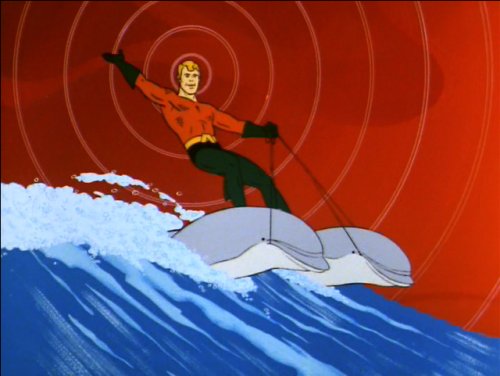
Whatever ground Aquaman gained in the Silver Age was lost in the 1960s and 70s. The animated ‘Super Friends’ TV show portrayed Aquaman as a clean-cut, seahorse riding do-gooder. He was an image of superhero wholesomeness with very little complexity and less to contribute when his fellow heroes took up arms. Writers did not put much effort into developing Aquaman as an equal Super Friend. He is unable to fully participate in many of the Super Friends’ battles. Instead, his role is mainly comprised of brief one-liners and supportive comments while the other heroes do most of the action-packed crime fighting. 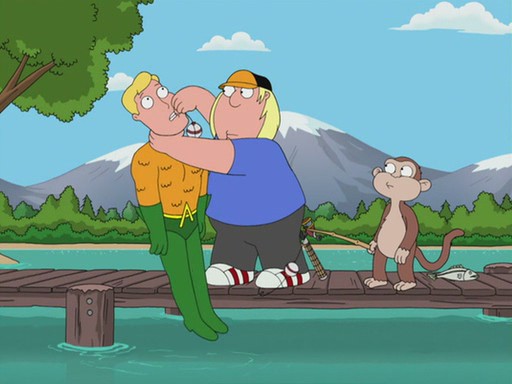
Clips of this Aquaman would go on to fuel most of the anti-Aquaman sentiment rampant through future decades. Unfortunately, this is the Aquaman most non-comic readers would think of until Jason Momoa’s blockbuster success as the character. Somehow, and luckily, this image wasn’t the end of Aquaman. He lived on as the butt of every superhero joke, appearing in shows like “Family Guy”, “Robot Chicken”, and “The Big Bang Theory”. If there is one word to describe what “Super Friends” turned Aquaman into, it would be “useless”.
The 1990s Image- The Gritty King
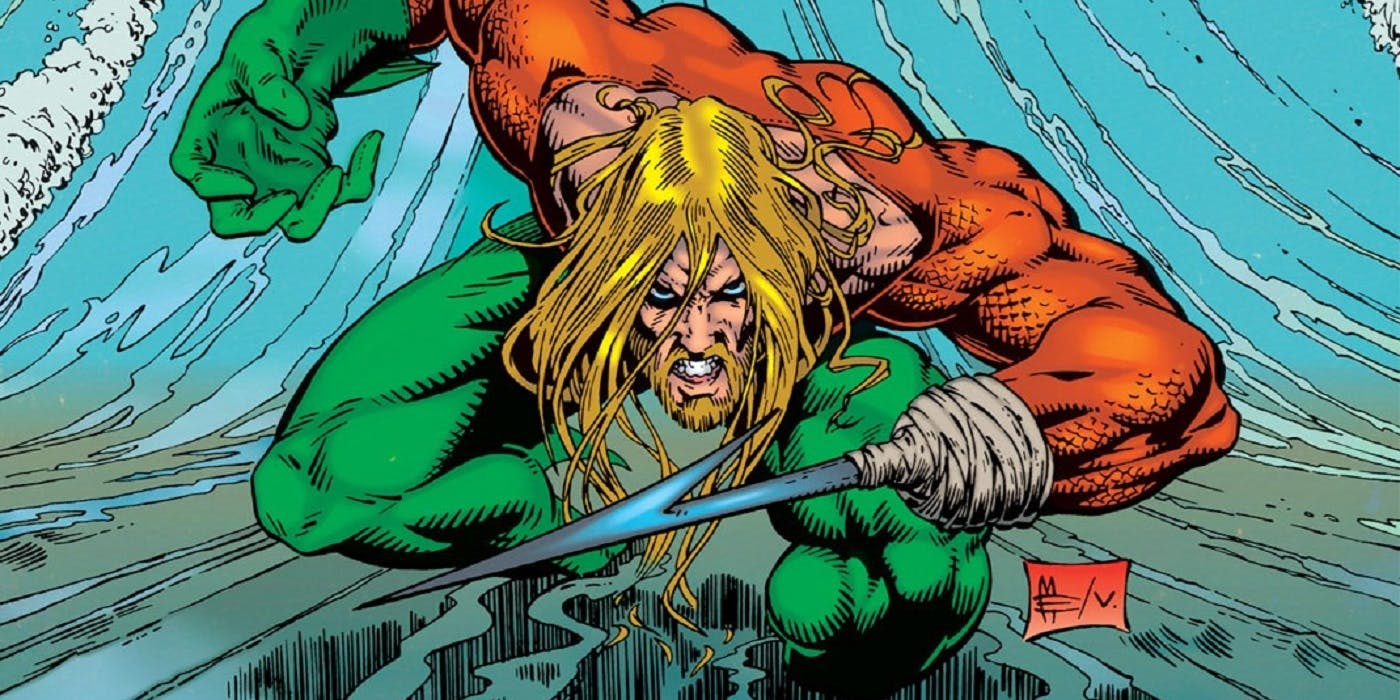
The 1990’s marks a decidedly darker turn for comics as an industry. Narratives changed to reflect the disillusioned mentality of writers and artists coming of age in the post- Camelot world. Faith in authority and goodness was in question, and the result was more violent content and complex storylines. Heroes were no longer good for the sake of being good, nor did they continue to fight without feeling the weight of their actions and the toll of their experiences. The gore and grit didn’t escape Aquaman’s title. This incarnation marks the first time readers really saw Aquaman as a political player. He’s a king trapped between worlds with fading hopes of uniting them. He spends much of his time brooding, grew long wild hair, and replaces his hand with a harpoon after losing it to piranhas.
Here, Aquaman’s image takes a sharp turn, flopping from the side of clean-cut averageness to a terrifying force to be reckoned with. Readers seemed intrigued, and by the early 2000s, Aquaman began his ascent back into the ranks of DC’s most popular heroes.
The New 52 Image- The Disrespected Hero

New 52 Aquaman was written as a character aware of his PR issues. Surface dwellers don’t take Aquaman seriously, a fact that makes Arthur seem a bit displaced. He fights against his own kind to protect them, often with very little gratitude. Sometimes the result is humorous, other times, it is a sad reminder of just how irresponsibly “Super Friends” handled Aquaman’s abilities. He’s useful on land or sea and completely capable of fighting alongside DC’s heaviest hitters. Like a true hero, Aquaman powers through. Even Mera is not in Arthur’s corner. The Xebel princess is revealed to be an evil twin of Mera, one hellbent on taking Aquaman down. The New 52 helped Aquaman’s reputation in some ways. By writing the public opinion of Aquaman into the story, his struggle to be taken seriously feels honest and does not resort to indulging the opposite extreme as it did in the 90s.
Rebirth to Current Image- The Formidable Regagade Ruler
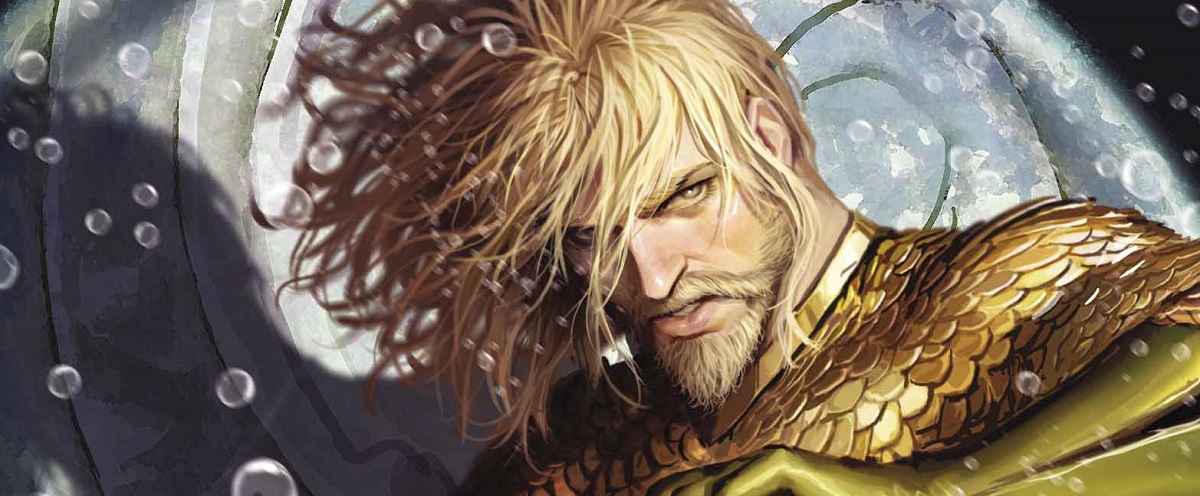
In Aquaman’s current incarnation, he’s become a character that lends himself surprisingly well to social commentary. Aquaman’s ‘Rebirth’ title has gained both praise and criticism for some of the obvious inspiration drawn from political unrest in the United States. There are few other Justice League members so directly involved in real political intrigue. As a king torn between worlds, Aquaman struggles to lead justly and is often challenged by choosing the right path. In any case, Aquaman’s story is a fantastic vessel to discuss topics like power, leadership, civil unrest, and torn loyalties. Aquaman has always been a champion of the oceans as well and fits seamlessly into modern concerns about global warming and the effects of human carelessness on our planet.
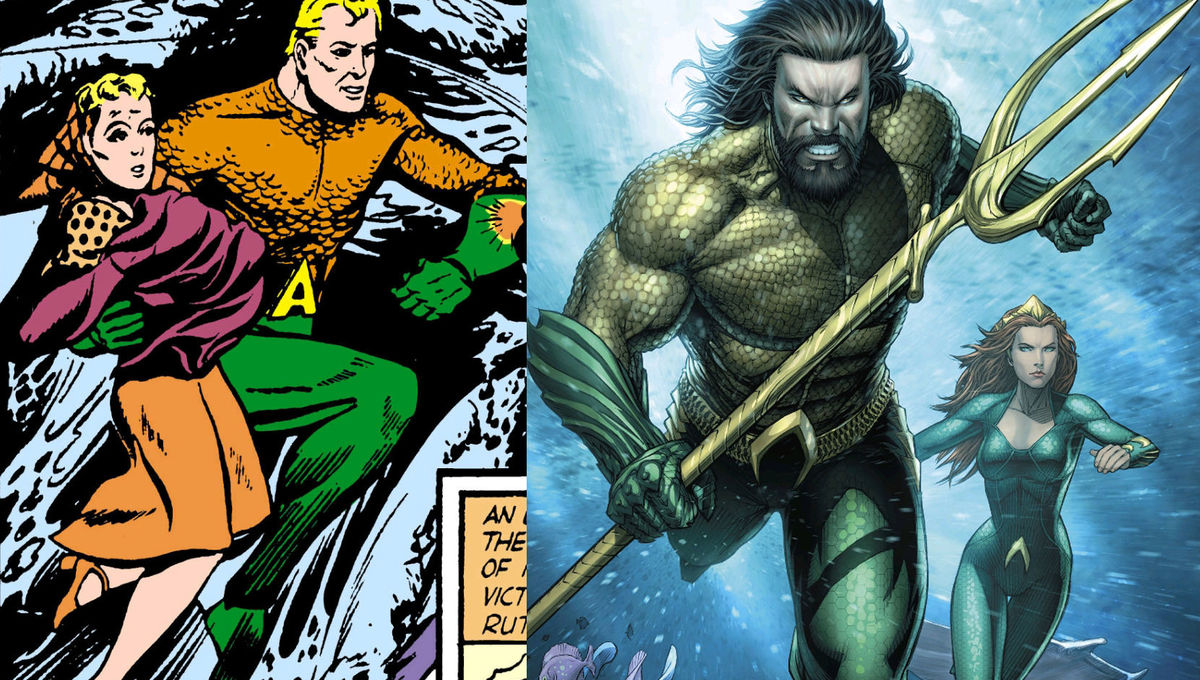 In the shadow of this Aquaman, the film’s version had plenty of room to develop into a formidable hero that is respected by citizens and feared by criminals. He has reclaimed not only the throne of Atlantis but also the powerful image he has long deserved. It is a reminder to us, as comic fans, that even the most seemingly insignificant character has the potential to become an icon. They may not all have the backing of a showstopper like Jason Momoa, but with thoughtful writing and careful input, the DC universe has limitless unlocked potential just beneath the surface.
In the shadow of this Aquaman, the film’s version had plenty of room to develop into a formidable hero that is respected by citizens and feared by criminals. He has reclaimed not only the throne of Atlantis but also the powerful image he has long deserved. It is a reminder to us, as comic fans, that even the most seemingly insignificant character has the potential to become an icon. They may not all have the backing of a showstopper like Jason Momoa, but with thoughtful writing and careful input, the DC universe has limitless unlocked potential just beneath the surface.